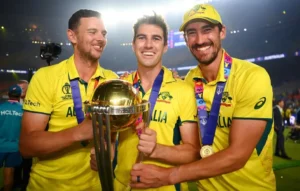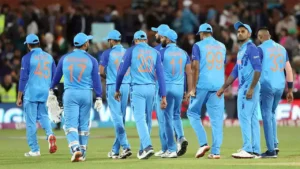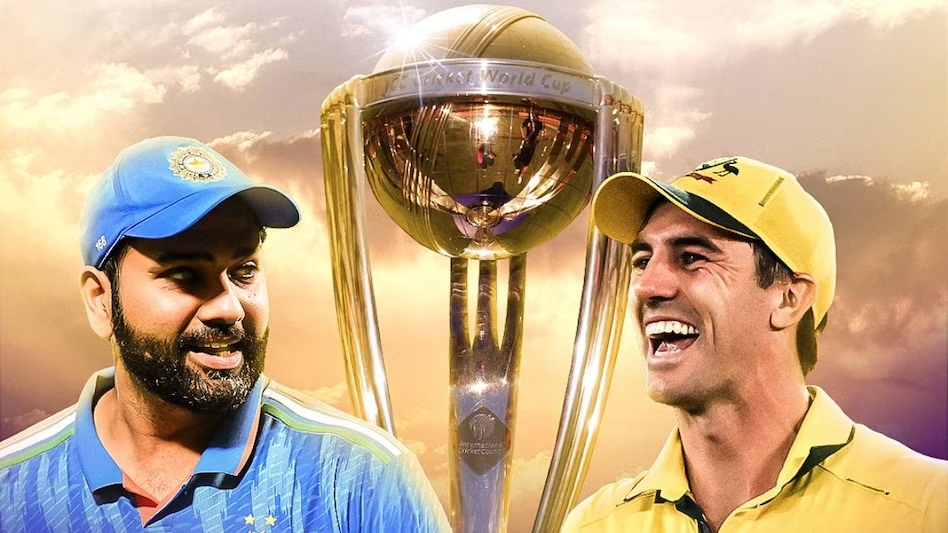India National Cricket Team vs Australia Cricket Team Timeline The cricket rivalry between India and Australia is one of the fiercest in the world, not just in the field of sports. Therefore, this rivalry in cricket has been made up of historic moments, unforgettable matches, and performances by legends for decades. Starting from Test series to ODIs and T20s, the timeline of the India-Australia cricketing rivalry is embellished with rich history that fans love all over the world. This article therefore highlights the important dates, series and defining moments in the cricketing rivalry between the two nations.
Early Days: 1947-1970
The cricket rivalry between India and Australia can be traced back to 1947 when the two teams clashed for the first time in a Test match held at Brisbane Cricket Ground (The Gabba). The visitors’ cricket were at the mercy of Australia, then captained by Don Bradman, as the Aussies whitewashed the series 4-0. This era saw the rivalry get underway, but for the Indian team, it was more of a learning curve. With the likes of Vijay Hazare and Vinu Mankid, India showed glimpses of their potential but often was beaten by the more experienced Australians.
1970s: Sunil Gavaskar-Bishan Singh Bedi Era
The 1970s got a new wave of talent coming into Indian cricket. The likes of Sunil Gavaskar, who became the first batsman to score 10,000 runs in Test cricket, and the emergence of the master spinner Bishan Singh Bedi started making their presence felt. In the series in Australia in 1977–78, India, under the captaincy of Bishan Singh Bedi, managed to win two Tests in a five-match series. Although Australia won the series 3-2, the fightback by India made them respected at least for putting up a good fight and prepared the playing field for a far better adversary.
1980s: Kapil Dev breaks through and Alan Border revival
The 1980s marked quite a defining decade for the India-Australia rivalry. Arising star all-rounder Kapil Dev pitted against the arising rock of Australia, Alan Border, in the middle order, arguably lends a riveting spin to the rivalry. During the Cricket World Championship in 1985, under the captaincy of Sunil Gavaskar, India defeated the host in the tournament. The victory showed a rising status of India in world cricket and thus put a better balance in the rivalry.
The 1986 tie Test match at Chennai (then Madras) is one of the most famous moments in cricket history. Both the teams scored identical runs in the second innings resulting in only the second tie in the history of cricket. This match is one of the most exciting matches between the two teams.
1990s: The Rise of Tendulkar and Waugh’s Australia

Two cricketing giants emerged in the 1990s: Sachin Tendulkar and Steve Waugh. Tendulkar, one of the all-time great batsmen, announced his arrival when, as a young man, he scored that wonderful hundred at SCG against Australia in 1992. His tussles with Australian bowlers, especially Shane Warne, acquired a legendary status. The fans await the match with bated breath.
Another high voltage encounter was between India and Australia in the quarter-final of the 1996 World Cup in Mumbai. The Australians emerged winners with a 16-run victory over the Indians who were captained by Mark Taylor. The era also saw the emergence of a strong Australian team led by Steve Waugh, known for his aggressive captaincy and his strength in mentally challenging opponents.
Early 2000s: Dominant Australia, struggling India
Early years of the 2000s were marked by the dominance of Australia in world cricket. Under the astute captaincies of Steve Waugh and the incumbent Ricky Ponting, the Australians were practically unbeatable. A series for the Border-Gavaskar Trophy in India in 2001 became one of Test cricket’s most fabled series. After being forced to follow on in the second Test in Kolkata, the Sourav Ganguly-led Indians went on to win the series 2–1. That earned VVS Laxman a historic 281 and Harbhajan Singh 32 wickets in the series, as Australia’s winning streak in Test cricket was finally brought to an end after 16 games.
Still, one highlight was the series in Australia in 2003–04, where India did well. The series ended in a 1–1 draw with the brilliant 233 by Rahul Dravid in Adelaide. The resilience of India in Australia basically marked their emergence as a strong side, capable of challenging the best in the world.
2007-2013: T20 cricket and new dynamics

The T20 format brought into the India-Australia rivalry a whole different experience. At the inaugural ICC T20 World Cup in 2007, India, under the then newly appointed captain MS Dhoni, beat Australia in the semi-finals, ultimately winning the tournament. This victory of India brought them right to the fore in T20 cricket.
The series in Australia during 2007-08 was no exception, with the world witnessing some very farcical moments indeed, but one of them was far worse than any other scandal, known as the “Monkey Gate”, which involved the off-spinner Harbhajan Singh and Australian all-rounder Andrew Symonds. The ill-feeling did not upset the tempo of the series, as Australia won the series 2-1, but India managed a very memorable victory at Perth, which is considered one of the fastest and bounciest pitches in the world.
India emerged as the winner in the ICC Cricket World Cup in 2011, co-hosted by India, Sri Lanka, and Bangladesh, defeating Australia in the quarterfinals and thus ending the Aussies’ domination of the tournament for 12 years. This was the defining moment in the rivalry between the two cricket giants.
2014-2019: Kohli vs Smith Era
So from 2014 to 2019, there emerged two modern-day greats: Virat Kohli and Steve Smith. The latter was molded into a world-class batsman and a leader in the 2014–15 Test series in Australia. Although India lost the series 2-0, Kohli hit four centuries that showed his class and aggression.
Success under Kohli Under Kohli’s captaincy, India registered a first-ever Test series victory in Australia in the 2018–19 season. It was also the first time an Asian team had won a Test series in Australia. The brilliant batting by Cheteshwar Pujara and the deadly pace by Jasprit Bumrah saw India win the series 2-1. This victory marked the balance of power changing significantly as India could win in any situation.
2020-Present: War for supremacy
It can be termed as one of the biggest Test series in Australia this year 2020-21 season. After having lost the first Test in Adelaide- where India were bowled out for a historic low of 36 runs, the team made a brilliant comeback. The visitors despite injuries to key players went on to win the second Test in Melbourne and drew the third in Sydney. It finally culminated with a historic win at the Gabba in Brisbane, where Rishabh Pant’s heroics saw India chase down 328 to end Australia’s 32-year unbeaten streak at the venue.
This phase also saw some sensational contests in white ball formats. Both teams went neck and neck in the ODI and T20I series, with top guns like Rohit Sharma, Pat Cummins, KL Rahul, and Glenn Maxwell delivering top performances every game.
The result is a rivalry that only grows. The India National Cricket Team vs Australia Cricket Team Timeline is not about the matches alone; it’s about the passion, the aggression, and the respect between two cricketing super giants. The timeline of India versus Australia cricket matches could be filled with epic battles, iconic moments, and a continuous fight for supremacy. Both sides are continuously developing, with new stars emerging, and this rivalry will remain one of the most intriguing in world cricket. The future holds more thrilling encounters and unforgettable memories for the fans of both countries.
Read more India National Cricket Team vs England Cricket Team Timeline: A Historic Rivalry
